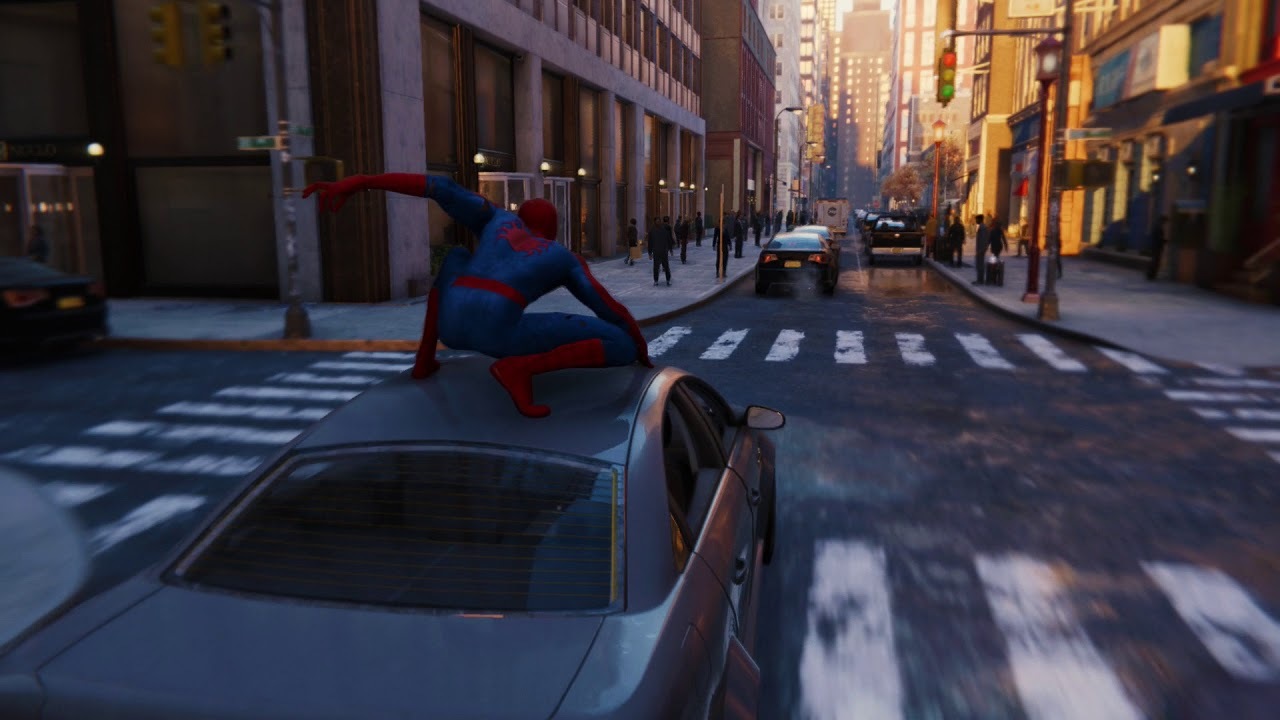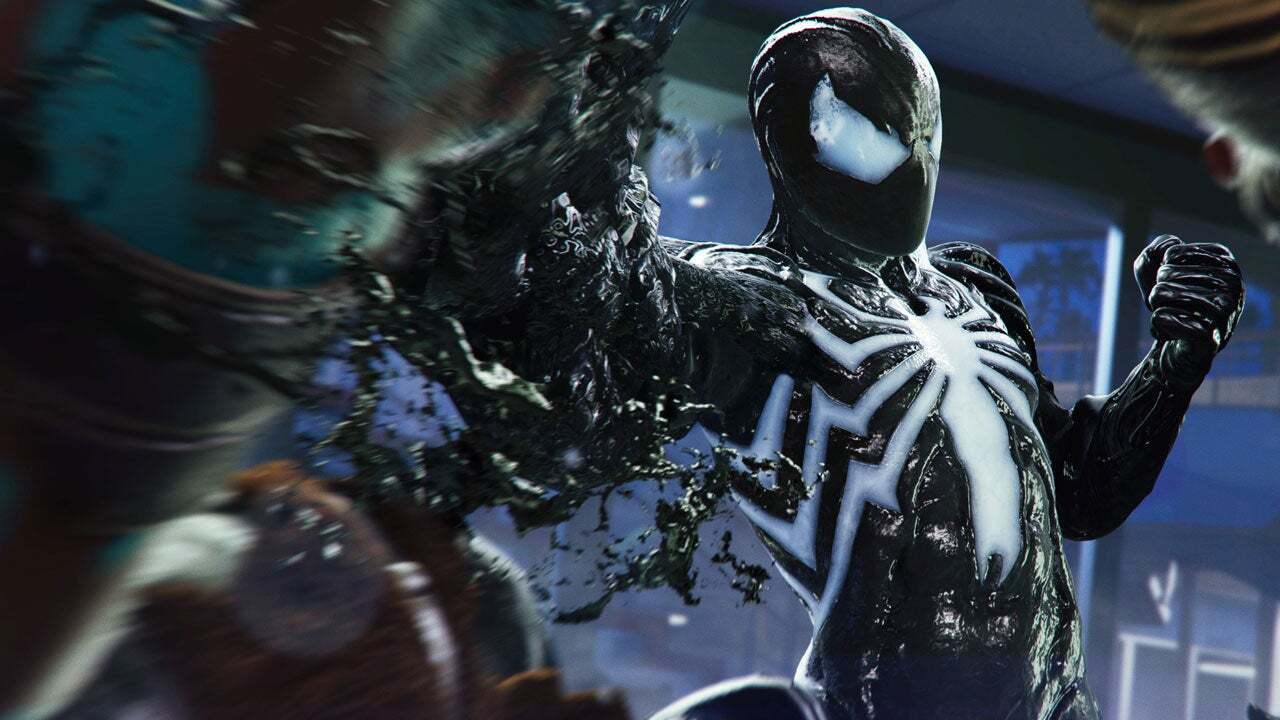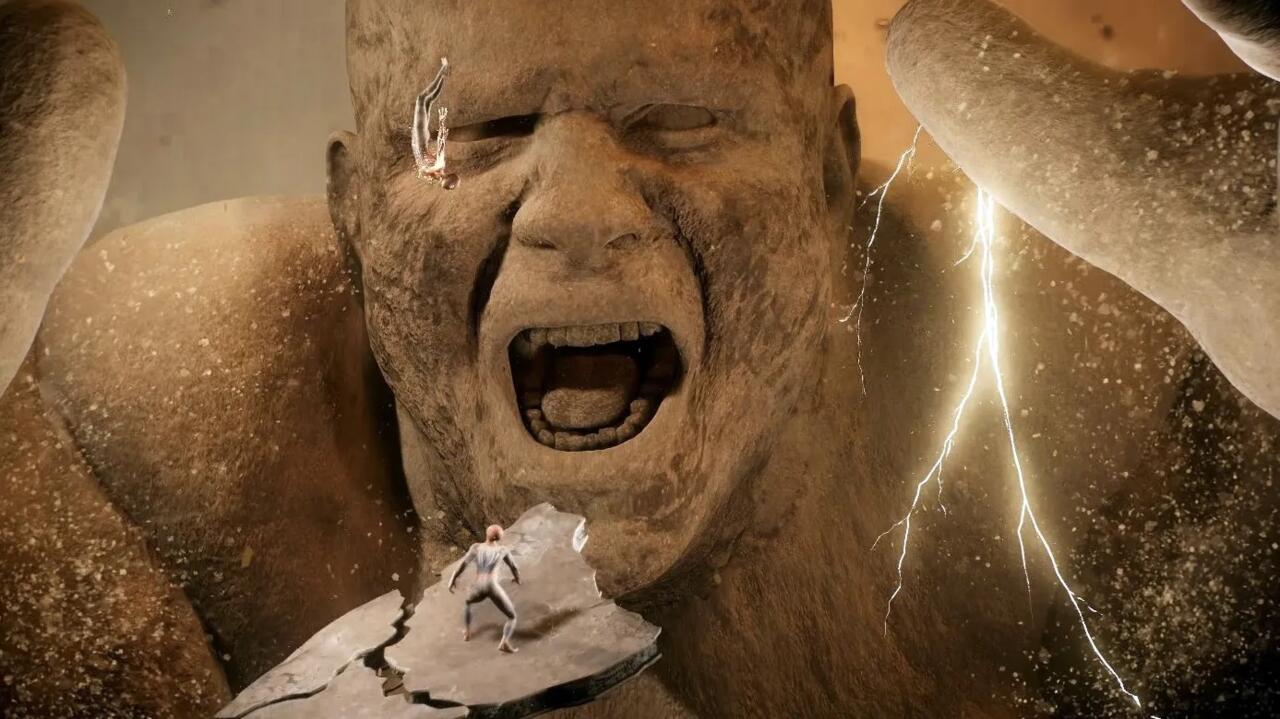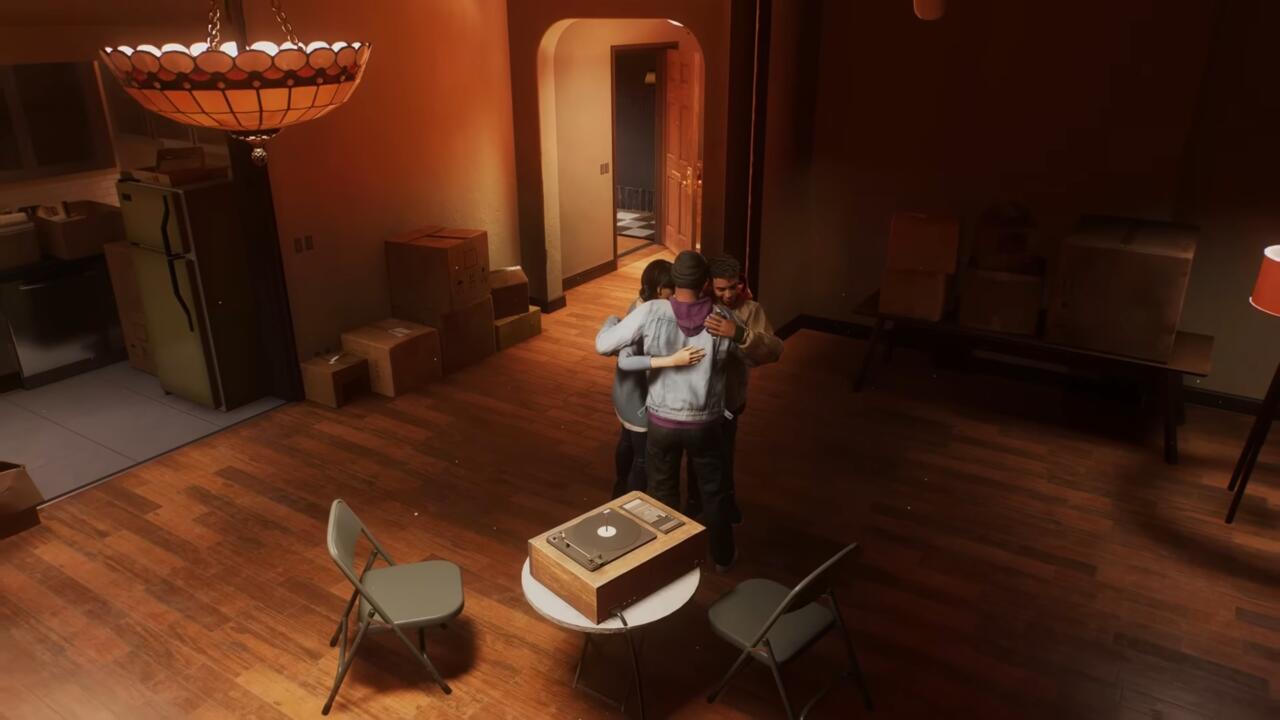There's a joke in Marvel's Spider-Man 2 that, if you're at all tied into discussions about Insomniac's Spider-Man games, feels pointed. It comes up during side-plot moments with Wraith, a vigilante who wants Peter Parker's Spider-Man to help her put an end to a fire-obsessed killer cult. When Spider-Man asks Wraith if she has any tattoos, she quips, "Just the one of Spider-Cop's gravestone."
It's a joke that requires some familiarity with the first Marvel's Spider-Man. The 2018 game saw Peter constantly working with New York Police Department captain Yuri Watanabe--the character who, after the events of the first game and its DLC, becomes Wraith. When they worked together, Peter often jokingly pretended to be a hardboiled, Dirty Harry-like detective character he called Spider-Cop, much to Yuri's annoyance. So on the surface, the "Spider-Cop's gravestone" gag is a callback to their previous close relationship and a dunk on Peter's dorky sense of humor, while also highlighting the dark turn Yuri has taken since.
But the death of Spider-Cop also references a larger discussion surrounding the first Spider-Man, and it's a microcosm of character elements at work in Spider-Man 2. In the first game, Insomniac "turned Spider-Man into a damn cop," as Deadspin's Tom Ley put it. But in the sequel, the developer turned that criticism into character development that's an essential part of the story. And, indirectly, it's also one of the main reasons that Peter Parker chooses to step away from his superhero role and let Miles Morales take over.
Marvel's Spider-Man saw Peter working with the NYPD a lot, something that rubbed many players the wrong way. After all, a big part of the character's deal is the "friendly neighborhood Spider-Man," the conception of a superhero with close ties to his community. Meanwhile, the NYPD's history of dealing with that community is, uh, not great, to put it very mildly. Spidey helped the police take on organized crime and break up muggings, but he also assisted in repairing surveillance towers, which echoed actual controversial surveillance technology used by the NYPD. These side quests left an uncomfortable and lingering feeling that Spidey works too closely and uncritically with the police, and had a seemingly pro-cop stance at a time when, in the real world, major protests focused on police brutality and calls for reform were taking place.
Things changed significantly with the Spider-Man games going forward. The Spider-Man: Miles Morales spinoff includes a Black Lives Matter tribute while also almost removing cops altogether--and, as Eliana Dockterman notes in an article for Time, side-steps a lot of the larger discussion in doing so. There are also fewer cops around in Spider-Man 2, with Peter and Miles relying on their own community-focused, Citizen-like app where people can request help from the Spider-Men directly, both for major developments like crimes and disasters, and minor acts of service such as assisting with a school project.
In an early mission in which you expand the reach of the app, Insomniac draws a clear line separating it from the surveillance criticisms. When Peter sees that Miles' friend Ganke wants to use drones as part of the project, he says, "We don't spy on people." The scene makes clear that the Spider-Men use a much more privacy friendly system to find out where they're needed.

Instead of focusing on helping out police, as Chris Plante at Polygon notes, here, Spider-Man is a firefighter. When you come across the fire cultists Yuri is chasing, putting out the flames of their arson is as important an objective as beating them up--which is the main thrust of the game.
Wraith's joke is true: Spider-Cop is dead in Spider-Man 2. Or at least, that's how things first appear.
While the NYPD plays a much more subdued role in Spider-Man 2, ideas about the effectiveness of policing and incarceration are still central to the story. Even if he's never mentioned, Spider-Cop lives on in Peter Parker and a big part of Peter's character development centers on dealing with him.
(Warning: Spoilers for the plot of Marvel's Spider-Man 2 beyond this point.)
The main plot thread of Spider-Man 2 focuses on how Peter Parker gets ahold of a new spider-suit that gives him incredible power, but turns out to be a living alien creature that bonds with him and affects his mind. The Black Suit story is well-trodden ground for Spider-Man media--Peter gets addicted to the power the alien symbiote affords him, but it reveals and amplifies the darker elements of his personality. The symbiote usually goes on to become the villain (and anti-hero) Venom, but in Spider-Man 2, part of the symbiote remains inside Peter, threatening to corrupt him.

To save Peter from the symbiote, Miles Morales teams up with Martin Li, aka Mister Negative, a major antagonist from the first game. Miles and Li have a history--when Li bombed a political rally in a bid to take revenge on Norman Osborn, he killed Miles's father, a police officer. Miles spends much of the game struggling with rage and a desire for vengeance against Li, but in the end, they work together, using Li's powers to delve into Peter's mind and destroy the symbiote within him.
It's during that foray into Peter's subconscious that we get some quick but essential character moments. The landscape plays out like a dream, with strange, disjointed locations through which the characters must pass. The darkest place in Peter's mind is represented by The Raft, a prison for supervillains populated by all the people Spider-Man has helped lock up. Li mentions that it makes sense that Spider-Man would spend a lot of time thinking about the prison, given how many people he has personally put there.
"He's protecting New York," Miles says in Peter's defense.
"Maybe not every problem can be solved with a cell," Li replies, a sentiment with which Miles agrees.
Soon after, the pair are attacked by a seemingly endless horde of enemies--projections of escaped criminals. "Everyone he puts away, they keep coming back," Miles says during the fight, with Li responding that it must be a source of endless frustration as the criminals Peter defeats break free to cause more pain, despite his best efforts.
The battle ends, finally, when the symbiote still inside Peter's mind kills all the criminals. As Miles and Li continue, they walk down a hallway in which Peter's many nemeses have each been cocooned in the oily black tendrils of the symbiote and killed. Even a representation of Li is among the dead littering Peter's mind.
"It killed them all," says Miles.
"The problem's solved," Li responds.
"That's not what Pete thinks," Miles tells him.
"No, but it might be how he feels," Li says.
Later, by working together to save Peter, Miles and Li come to an understanding. While Miles tells Li that he can't forgive him, he does give Li the opportunity to pursue his own redemption. After Peter is saved, Li turns himself back into the police, telling the Spideys that he intends to try to set right his past actions.
"Reforming your greatest enemy," Peter says to Miles as Li walks away. "Can't say I've ever done that."
Then, thinking about the situation and this outcome even more, Peter continues, "Why would this city need me when it has you?"

Not every problem can be solved with a cell, but that's often the only solution a game like this affords the hero and the player. Insomniac spends much of Spider-Man 2 dealing with this fact and subverting it. That line of thinking starts with the opening battle against the rampaging villain Flint Marko, otherwise known as Sandman, in which the two Spider-Men team up to take Marko down. But it's only after Marko has been thrown behind bars that the Spideys discover the rampage was the result of Marko coming under attack by the game's major antagonist, Kraven, and trying to defend himself and protect his daughter. Peter and Miles contemplate helping Marko in the end as they work to come to terms with the fact that they fought Marko rather than try to help him.
Peter and Miles have separate side missions that focus on particular villains, and all of them continue to play with the themes of incarceration, recidivism, and redemption. Peter's story with Wraith sees Yuri becoming an angry, Batman-like vigilante, willing to kill members of the cult she's chasing if she deems it necessary. Yuri's willingness to take on an extrajudicial authority over life and death is directly in line with debates and protests over how police exercise their power. It's all a grim reflection of the person Peter expressly does not want to be, and yet is in danger of becoming under the right circumstances.
Meanwhile, Miles' specific missions focus on former villains and go even further in teaching him lessons about how he judges people. One deals with Quentin Beck, formerly the illusionist villain Mysterio, who is trying to launch a new entertainment business. His venues keep trapping people inside them, forcing Miles to fight through computer simulations to save the civilians, and each makes it seem as though Beck is up to something dastardly. In the end, it's a frame job by Beck's business partners, though Beck comes dangerously close to taking the fall for the scheme. The entire ordeal ends with Beck just looking tired. The story sheds some light, in a heightened way, on what incarcerated people really go through after their release--they often struggle to put their lives back together and people regularly take advantage of them.
Miles also has a story centering on his uncle, Aaron Davis, formerly the Prowler in Marvel's Spider-Man: Miles Morales. As Miles goes around the city recovering Prowler tech from Aaron's stashes, he learns more about the relationship between his uncle and father. As the mission concludes, Miles briefly believes Aaron is falling back into his criminal past and stealing things from Miles' mother's apartment that belonged to his father. It turns out that Aaron, too, is trying to make amends and move on with his life. The story brings Miles to a lesson about examining his assumptions.

Second chances have always been essential to the Spider-Man story, but Spider-Man 2 looks at what is required to even be allowed a second chance. It explores the idea that Spider-Cop lives in Peter Parker's head--and maybe, by extension, in the heads of the developers. The game literally ventures into Peter's mind and finds incarceration and execution in its darkest corners. We're watching Spider-Man 2 grapple with Peter's internalized beliefs and assumptions as he struggles to be the hero he wants to be, and his experience with the Venom symbiote teaches Peter that he has work to do on himself. It's not hard to project Peter learning a lesson about his own biases onto the developers at Insomniac, working through them in making a game about it.
Insomniac has said that Miles Morales will be the main hero going forward in its series, with Peter Parker stepping back. Spider-Man 2 uses its story to show us why that's necessary. Yes, Peter struggles to balance having a life with being a hero, but that's only a piece of a larger issue. The story of Peter Parker in Spider-Man 2 is about coming to terms with the idea that he's not the best man for this job anymore because of the differences between how he sees the world and how Miles does.
Despite what Wraith says, it's only at the end of Spider-Man 2 that Spider-Cop is truly dead. Free of his influence, it'll be interesting to see what kind of Spider-Man stories Insomniac tells in the future.

